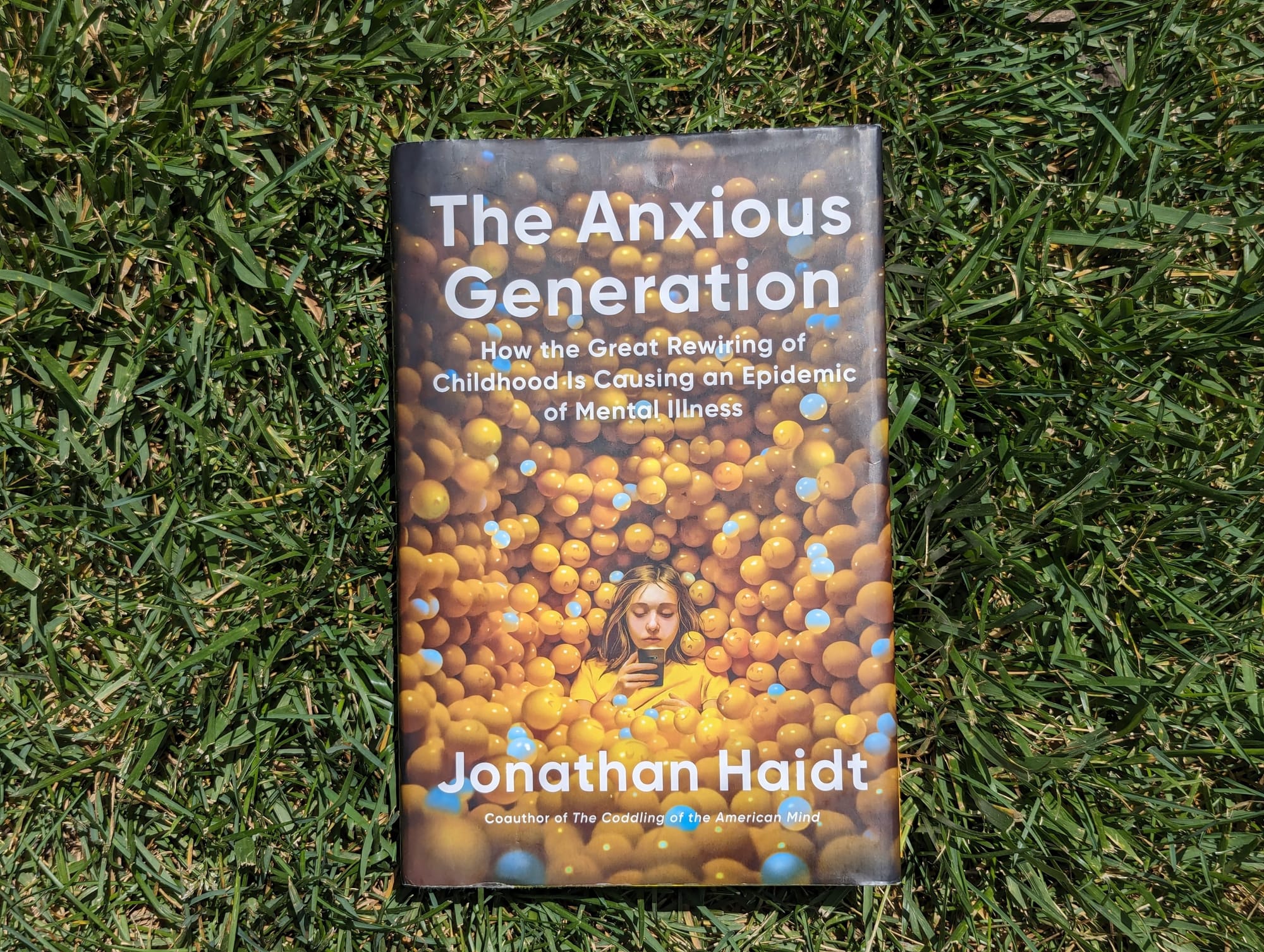The Anxious Generation

Jonathan Haidt's The Anxious Generation: How the Great Rewiring of Childhood is Causing an Epidemic of Mental Illness argues that the mental health crisis among today's youth, especially Gen Z, stems from a dramatic transformation in childhood caused by the rise of smartphones and social media. Haidt calls this shift the "Great Rewiring," a period from about 2010 to 2015 when play-based, in-person childhoods were rapidly replaced by phone-based, digital ones. This transformation, he claims, has led to increased anxiety, depression, and social dysfunction among young people, as their developmental needs for real-world play, risky exploration, and gradual independence have been undermined by digital immersion.
The book opens with a striking analogy: sending children into today's digital world is like sending them to Mars; untested, risky, and with unknown long-term effects. Haidt details how tech companies, in pursuit of engagement and profit, designed addictive products without considering the developmental vulnerabilities of children. He draws parallels to the tobacco and oil industries, noting that while social media offers real value to adults, its costs for children whose brains are still developing; are far higher, and the benefits are minimal. He points out that, unlike with tobacco or alcohol, there are few legal limits on children's access to these technologies, and existing laws like COPPA are easily bypassed.
Haidt organizes his argument into four parts:
- Part 1: A Tidal Wave outlines the surge in youth mental health problems since the early 2010s.
- Part 2: The Decline of the Play-Based Childhood explores what children need for healthy development, emphasizing the importance of unstructured, risky play and face-to-face interaction.
- Part 3: The Great Rewiring identifies four foundational harms; social deprivation, sleep deprivation, attention fragmentation, and addiction and examines why social media harms girls more (social comparison, cyberbullying), while boys are more affected by gaming and online pornography.
- Part 4: Solutions offers practical steps for governments, tech companies, schools, and parents, such as regulation, delaying phone access, tech-free schools, and promoting real-world play. The conclusion calls for a cultural reset to restore healthier, play-based childhoods.
Notable quotes include:
Gen Z became the first generation in history to go through puberty with a portal in their pockets that called them away from the people nearby and into an alternative universe that was exciting, addictive, unstable, and—as I will show—unsuitable for children and adolescents.
Let children grow up on Earth first, before sending them to Mars.
Key Takeaways by Chapter/Section
- Introduction: Growing Up on Mars Compares sending kids into the digital world to sending them to Mars, untested, risky, and with unknown long-term effects.
- The Surge of Suffering Documents the dramatic increase in youth mental health problems since the early 2010s.
- What Children Need to Do in Childhood Argues that unstructured, risky play is essential for healthy development.
- Discover Mode and the Need for Risky Play Explains how play and risk-taking build resilience and social skills.
- Puberty and the Blocked Transition to Adulthood Describes how digital immersion delays social and emotional maturity.
- The Four Foundational Harms Identifies key harms: social deprivation, sleep deprivation, attention fragmentation, and addiction.
- Why Social Media Harms Girls More Than Boys Explores social comparison, appearance anxiety, and cyberbullying among girls.
- What Is Happening to Boys? Discusses boys' retreat into gaming, pornography, and withdrawal from real-world challenges.
- Spiritual Elevation and Degradation Considers how digital life affects meaning, purpose, and moral development.
- Solutions (Chapters 9-12) Outlines what governments, tech companies, schools, and parents can do: regulation, delayed phone access, tech-free schools, and promoting real-world play.
- Conclusion: Bring Childhood Back to Earth Calls for a cultural reset to restore healthy, play-based childhoods.
Core Takeaways
- The smartphone and social media era has fundamentally altered childhood, with negative consequences for mental health.
- Real-world play, face-to-face interaction, and gradual independence are critical for healthy development.
- Girls and boys are harmed in different ways by digital immersion.
- Solutions require action at every level: policy, tech design, school practices, and family routines.
Target Audience and Relevance
- Parents: Seeking guidance on raising children in a digital world.
- Educators and School Leaders: Interested in policies to promote student well-being.
- Policymakers: Considering regulation of tech companies and children's online access.
- Mental Health Professionals: Concerned about youth anxiety and depression.
- General Public: Anyone interested in generational change, technology, and society.
Controversies or Criticisms
- Some critics argue Haidt overstates the causal link between smartphones/social media and mental health, pointing to other societal factors.
- Others note the book's focus on risks may downplay potential benefits of technology for learning, connection, and marginalized youth.
- The book has sparked debate about the balance between parental responsibility and regulatory intervention.
The book is best suited for anyone concerned about the effects of technology on childhood and society. While Haidt's warnings have resonated widely, some critics argue he overstates the causal link between smartphones/social media and mental health, pointing to other societal factors, and caution that the book's focus on risks may downplay potential benefits of technology for learning and connection.
Overall, The Anxious Generation is a powerful call to rethink how we allow technology to shape childhood, urging collective action to protect the mental health and development of future generations.